GERMANE
- CAS NO.:7782-65-2
- Empirical Formula: GeH4
- Molecular Weight: 76.64
- MDL number: MFCD00011028
- EINECS: 231-961-6
- SAFETY DATA SHEET (SDS)
- Update Date: 2024-12-18 13:37:16

What is GERMANE?
Chemical properties
Colorless gas, decomposes at 350C, insoluble in water, soluble in liquid ammonia, slightly soluble in hot hydrochloric acid.
Chemical properties
Germane is a colorless, flammable gas. Pungent odor.
The Uses of GERMANE
It is used to produce high-purity germaniummetal and as a doping substance for electroniccomponents.
The Uses of GERMANE
Germanium tetrahydride (GeH4) is used to produce crystals of germanium. It is extremely toxic.
The Uses of GERMANE
Doping agent for solid-state electronic components
Definition
A germanium hydride of the general formula GenH2n+2.
General Description
GERMANE is a colorless gas with a pungent odor.The gas is heavier than air and a flame can flash back to the source of leak very easily. GERMANE is toxic by inhalation. Prolonged exposure of the containers to fire or intense heat may result in their violent rupturing and rocketing. GERMANE is used in making electronics.
Air & Water Reactions
Highly flammable. Pyrophoric, the germanium hydrides are spontaneously flammable in air [Merck 1989]. Germanium has an exothermic reaction when dropped in water accompanied by crackling [Bretherick's 5th edition].
Reactivity Profile
Hydrides, such as GERMANE, are reducing agents and react rapidly and dangerously with oxygen and with other oxidizing agents, even weak ones. Thus, they are likely to ignite on contact with alcohols. Hydrides are incompatible with acids, alcohols, amines, and aldehydes.
Health Hazard
TOXIC; may be fatal if inhaled or absorbed through skin. Contact with gas or liquefied gas may cause burns, severe injury and/or frostbite. Fire will produce irritating, corrosive and/or toxic gases. Runoff from fire control may cause pollution.
Health Hazard
Germane is a moderately toxic gas. Itexhibits acute toxicity, lower than that ofstannane, but much greater than that ofsilane. By contrast, its poisoning effects aresomewhat similar to the group VB metalhydrides, arsine, and stibine, while beingmuch less toxic than the latter two compounds.Exposure to this gas can cause injuryto the kidney and liver. A 1-hour exposure toa concentration of 150–200 ppm in air wasfatal to test animals, including mice, guineapigs, and rabbits. Inhalation of the gas canalso cause irritation of the respiratory tract.
Fire Hazard
Flammable; may be ignited by heat, sparks or flames. May form explosive mixtures with air. Vapors from liquefied gas are initially heavier than air and spread along ground. Vapors may travel to source of ignition and flash back. Some of these materials may react violently with water. Cylinders exposed to fire may vent and release toxic and flammable gas through pressure relief devices. Containers may explode when heated. Ruptured cylinders may rocket. Runoff may create fire or explosion hazard.
Safety Profile
Poison by inhalation. Moderately toxic by ingestion. A hemolytic gas. Ignites spontaneously in air. Incompatible with Brz. See also HYDRIDES, GERMANIUM COMPOUNDS, and GERMANIUM.
Potential Exposure
This material is used as a doping agent in solid state electronic component manufacture.
Shipping
UN2192 Germane, Hazard Class: 2.3; Labels: 2.3-Poisonous gas, 2.1-Flammable gas, Inhalation Hazard Zone B. Cylinders must be transported in a secure upright position, in a well-ventilated truck. Protect cylinder and labels from physical damage. The owner of the compressed gas cylinder is the only entity allowed by federal law (49CFR) to transport and refill them. It is a violation of transportation regulations to refill compressed gas cylinders without the express written permission of the owner.
Incompatibilities
Pyrophoric; may ignite spontaneously in air. Attacks hydrocarbon and fluorocarbon lubricants. Incompatible with oxidizers (chlorates, nitrates, peroxides, permanganates, perchlorates, chlorine, bromine, fluorine, etc.); contact may cause fires or explosions. Keep away from oxidizing and nonoxidizing acids, ammonia, aqua regia, sulfuric acid, carbonates, halogens, and nitrates. Explosive reaction or ignition with potassium chlorate, potassium nitrate, chlorine, bromine, oxygen, and potas sium hydroxide in the presence of heat.
Waste Disposal
Return refillable compressed gas cylinders to supplier. Dispose of contents and container to an approved waste disposal plant. All federal, state, and local environmental regulations must be observed.
Properties of GERMANE
| Melting point: | -165°C |
| Boiling point: | -88°C |
| Density | 1,53 g/cm3 |
| vapor density | 1.53 (142 °C, vs air) |
| solubility | insoluble in H2O |
| form | colorless gas |
| color | colorless gas; flammable |
| Specific Gravity | 1.53 |
| Water Solubility | insoluble H2O; soluble liquid ammonia, slightly soluble hot HCl [HAW93] |
| Hydrolytic Sensitivity | 10: reacts extremely rapidly with moisture and oxygen - may be pyrophoric - sealed system required |
| Merck | 13,4418 |
| Exposure limits | TLV-TWA 0.62 mg/m3 (0.3 ppm) (ACGIH). |
| CAS DataBase Reference | 7782-65-2 |
| EPA Substance Registry System | Germane (7782-65-2) |
Safety information for GERMANE
| Signal word | Danger |
| Pictogram(s) |
 Flame Flammables GHS02  Skull and Crossbones Acute Toxicity GHS06 |
| GHS Hazard Statements |
H220:Flammable gases H280:Gases under pressure H302:Acute toxicity,oral H330:Acute toxicity,inhalation |
| Precautionary Statement Codes |
P210:Keep away from heat/sparks/open flames/hot surfaces. — No smoking. P260:Do not breathe dust/fume/gas/mist/vapours/spray. P284:Wear respiratory protection. P310:Immediately call a POISON CENTER or doctor/physician. P410+P403:Protect from sunlight. Store in a well-ventilated place. |
Computed Descriptors for GERMANE
New Products
(S)-3-Aminobutanenitrile hydrochloride 4-Methylphenylacetic acid N-Boc-D-alaninol N-BOC-D/L-ALANINOL Tert-butyl bis(2-chloroethyl)carbamate 3-Morpholino-1-(4-nitrophenyl)-5,6-dihydropyridin- 2(1H)-one Furan-2,5-Dicarboxylic Acid Tropic acid 1-Bromo-3,5-Di-Tert-Butylbenzene S-2-CHLORO PROPIONIC ACID ETHYL ISOCYANOACETATE 2-Bromo-1,3-Bis(Dimethylamino)Trimethinium Hexafluorophosphate 4-IODO BENZOIC ACID 3-NITRO-2-METHYL ANILINE 1-(2,4-DICHLOROPHENYL) ETHANAMINE (2-Hydroxyphenyl)acetonitrile 4-Bromopyrazole 2-(Cyanocyclohexyl)acetic acid 4-methoxy-3,5-dinitropyridine 1-(4-(aminomethyl)benzyl)urea hydrochloride 2-aminopropyl benzoate hydrochloride diethyl 2-(2-((tertbutoxycarbonyl)amino) ethyl)malonate tert-butyl 4- (ureidomethyl)benzylcarbamate Ethyl-2-chloro((4-methoxyphenyl)hydrazono)acetateRelated products of tetrahydrofuran

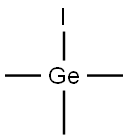
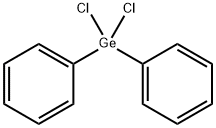
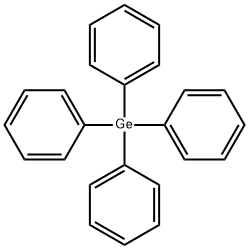

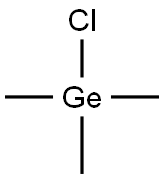

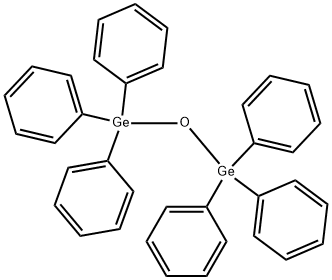
You may like
-
 2033-24-1 98%View Details
2033-24-1 98%View Details
2033-24-1 -
 42831-50-5 5-METHYLISOXAZOLE-4-CARBOXYLIC ACID 98%View Details
42831-50-5 5-METHYLISOXAZOLE-4-CARBOXYLIC ACID 98%View Details
42831-50-5 -
 1975-50-4 98%View Details
1975-50-4 98%View Details
1975-50-4 -
 2-HYDROXY BENZYL ALCOHOL 98%View Details
2-HYDROXY BENZYL ALCOHOL 98%View Details
90-01-7 -
 2-Chloro-1,3-Bis(Dimethylamino)Trimethinium Hexafluorophosphate 221615-75-4 98%View Details
2-Chloro-1,3-Bis(Dimethylamino)Trimethinium Hexafluorophosphate 221615-75-4 98%View Details
221615-75-4 -
 61397-56-6 CIS BROMO BENZOATE 98%View Details
61397-56-6 CIS BROMO BENZOATE 98%View Details
61397-56-6 -
 14714-50-2 (2-Hydroxyphenyl)acetonitrile 98+View Details
14714-50-2 (2-Hydroxyphenyl)acetonitrile 98+View Details
14714-50-2 -
 118753-70-1 98+View Details
118753-70-1 98+View Details
118753-70-1